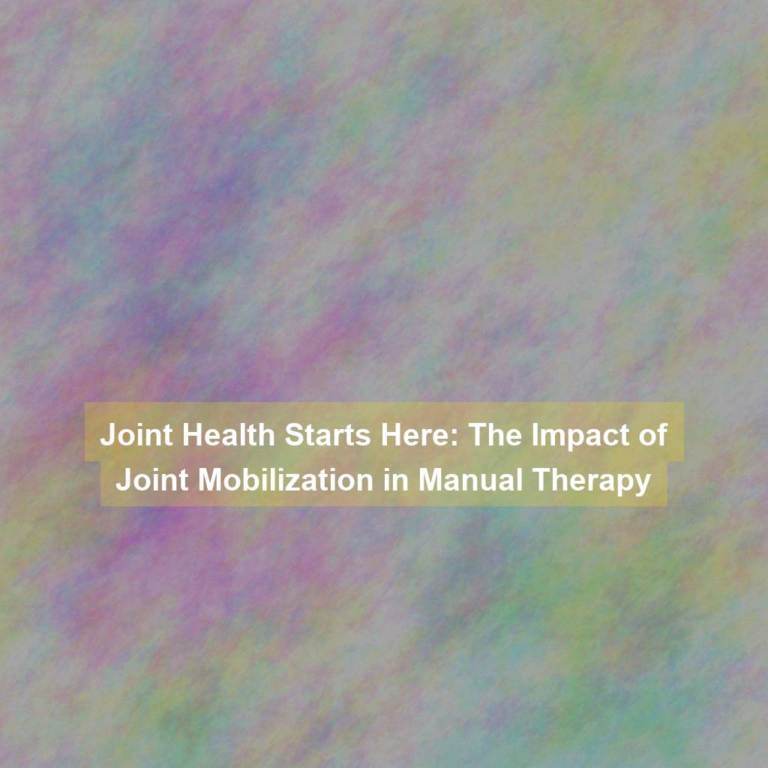You may not realize that soft tissue mobilization in manual therapy goes beyond just relaxation and relief of muscle tension.
The techniques used in this practice can target specific areas of the body to promote healing and improve overall mobility.
But what exactly does soft tissue mobilization entail, and how can it benefit you in ways you may not have considered before?
Understanding Soft Tissue Mobilization
When performing soft tissue mobilization, you’re actively engaging with the muscles and fascia to improve their flexibility and function. By applying pressure and specific techniques to the soft tissues, such as kneading, stripping, or stretching, you can effectively break down adhesions, scar tissue, and muscle tightness. This process aims to enhance blood flow, reduce pain, and restore normal tissue extensibility. As you manipulate the soft tissues, you’re promoting the realignment of muscle fibers and the reorganization of the fascia, ultimately leading to improved range of motion and decreased muscle tension.
Soft tissue mobilization also targets trigger points, which are hyperirritable spots in the muscles associated with nodules or bands. By directly addressing these trigger points, you can release the tension and alleviate associated pain. Additionally, this manual therapy technique stimulates the body’s natural healing process, encouraging the production of collagen and elastin while promoting tissue repair. Through consistent and focused soft tissue mobilization, you can help your clients or patients experience enhanced mobility, reduced discomfort, and improved overall function.
Benefits of Soft Tissue Mobilization
Enhancing flexibility and promoting tissue repair, soft tissue mobilization offers a range of benefits for improving overall function and reducing discomfort. By targeting specific areas of soft tissue, this manual therapy technique helps to break down adhesions, scar tissue, and fascial restrictions. This can lead to increased range of motion and enhanced muscle performance, making it particularly beneficial for athletes and individuals recovering from injuries.
Additionally, soft tissue mobilization can stimulate blood flow to the treated area, promoting the delivery of oxygen and nutrients while facilitating the removal of metabolic waste products. This process supports tissue healing and can help reduce inflammation, alleviating pain and discomfort. Moreover, the relaxation of tense muscles through soft tissue mobilization can contribute to improved posture and reduced stress on joints, potentially reducing the risk of overuse injuries.
Techniques for Soft Tissue Mobilization
To effectively apply soft tissue mobilization, practitioners utilize various manual techniques to target specific areas of soft tissue, breaking down adhesions, scar tissue, and fascial restrictions.
One common technique is myofascial release, which involves applying sustained pressure to the myofascial connective tissue to eliminate pain and restore motion.
Another effective method is deep transverse friction massage, where the therapist applies deep pressure across the fibers of the affected soft tissue to reduce adhesions and promote healing.
Trigger point therapy is also widely used, focusing on releasing hyperirritable points in the muscle tissue by applying pressure and stretching.
Additionally, instrument-assisted soft tissue mobilization employs tools such as Graston or ASTYM to break down scar tissue and fascial restrictions.
Furthermore, manual traction techniques are utilized to stretch and mobilize soft tissue, helping to improve flexibility and reduce pain.
Practitioners may also incorporate techniques like skin rolling, effleurage, and petrissage to enhance circulation and promote tissue healing.
These various techniques offer a comprehensive approach to soft tissue mobilization, addressing specific issues and promoting overall tissue health.
Conditions Treated With Soft Tissue Mobilization
Soft tissue mobilization effectively treats a variety of conditions, including muscle strains, ligament sprains, and myofascial pain syndrome. When you experience a muscle strain, the soft tissue mobilization technique helps by breaking down scar tissue and adhesions, promoting proper alignment of muscle fibers, and restoring flexibility and strength to the affected muscle.
Ligament sprains, on the other hand, benefit from soft tissue mobilization as it aids in reducing inflammation, improving circulation to the injured ligament, and enhancing the healing process. Additionally, myofascial pain syndrome, characterized by chronic pain and sensitive points in the muscles, responds well to soft tissue mobilization by releasing trigger points, improving blood flow, and alleviating muscle tension.
Soft tissue mobilization also proves effective in addressing conditions such as tendinitis, bursitis, and repetitive strain injuries by targeting the affected soft tissues, reducing pain, and restoring proper function. Whether you’re dealing with a muscle strain, ligament sprain, myofascial pain syndrome, or other soft tissue-related conditions, soft tissue mobilization can play a crucial role in your recovery and healing process.
Incorporating Soft Tissue Mobilization Into Practice
If you’re a manual therapist, incorporating soft tissue mobilization into your practice can significantly enhance your ability to address a wide range of soft tissue-related conditions effectively. By integrating soft tissue mobilization techniques such as myofascial release, deep tissue massage, and instrument-assisted soft tissue mobilization, you can offer your clients a more comprehensive treatment approach.
Start by assessing your clients’ soft tissue health and identifying areas of dysfunction or restriction. Then, tailor your soft tissue mobilization techniques to address these specific areas, aiming to improve tissue flexibility, reduce pain, and restore optimal function. Incorporating soft tissue mobilization into your practice also allows you to provide a more holistic approach to manual therapy, addressing not only joint mobility but also the health and function of the surrounding soft tissues.
Additionally, by staying up to date with the latest research and advancements in soft tissue mobilization, you can continuously refine and expand your treatment options, further benefiting your clients. Embracing soft tissue mobilization in your practice can elevate your effectiveness in addressing soft tissue-related conditions, ultimately enhancing the overall quality of care you provide.
Conclusion
So, now you know how soft tissue mobilization can benefit your clients by promoting relaxation, reducing pain, and improving range of motion.
By incorporating these techniques into your practice, you can help your clients unwind and heal from their musculoskeletal issues.
With the right training and expertise, you can effectively use soft tissue mobilization to address a wide range of conditions and provide a holistic approach to manual therapy.







